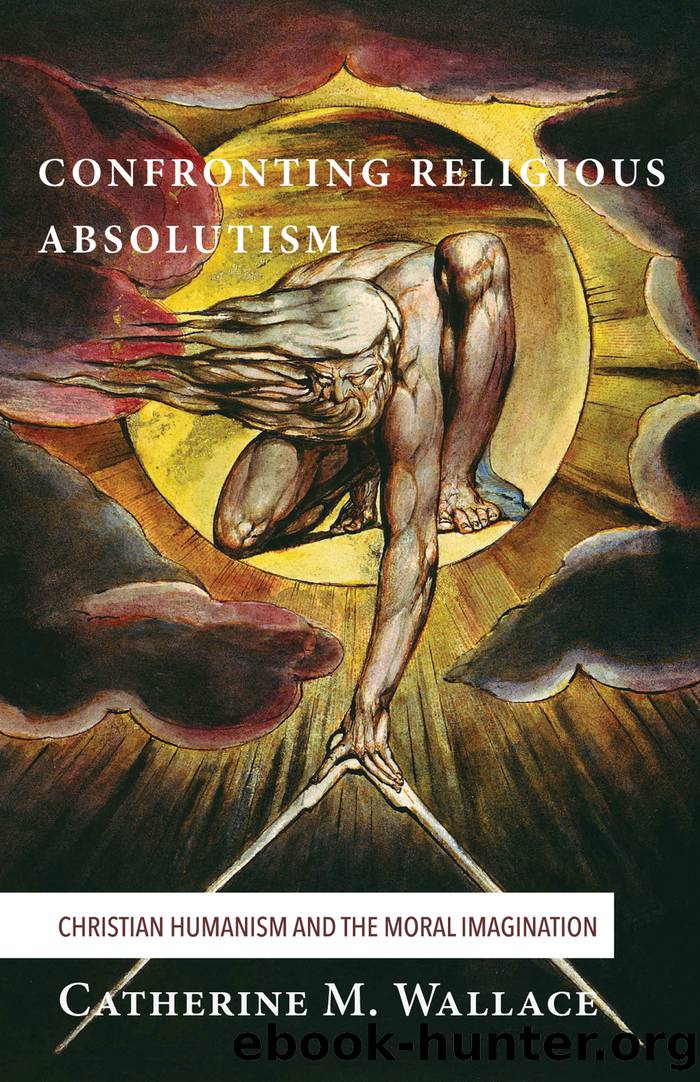Confronting Religious Absolutism by Wallace Catherine M.;

Author:Wallace, Catherine M.; [Wallace, Catherine M.]
Language: eng
Format: epub
ISBN: 9781498228855
Publisher: Wipf and Stock Publishers
Published: 2016-11-08T08:00:00+00:00
14. Hart, Atheist Delusions, 63.
15. Sacks, Not in Godâs Name, chapter 12.
16. Details about their many works are listed in the bibliography.
17. Coleridge, Biographia Literaria, II, 6.
8
Religious Absolutism (2): Papal Infallibility
In the mid-1800s, reactionary religious anxiety reverberated just as clearly among Roman Catholics as it did among Protestants. The result was yet another disastrous modernist invention: papal infallibility.
This story starts in 1868, when Pope Pius IX announced the first Vatican Council. Its unannounced agenda was his desire to declare himself infallible. After two years, he finally wrestled that voteâin legally dubious waysâfrom the remnant of bishops still present in Rome. Pius IXâs goal was gaining clout for his opposition to everything he had already denounced as âmodernist,â including science, democracy, freedom of religion, and rigorous biblical scholarship in the tradition of Christian humanism. He did so by making a quintessentially modernist claim: that as pope, by virtue of his office, he and he alone had access to absolute unquestionable truth.
No prior pope had ever made such a claim. No one had ever said that the pope by definition canât make a mistake or be corrupted by his own ambition. In fact, medieval painters had regularly portrayed a pope among the damned in hell.
Hereâs the theory behind papal infallibility. It had once been said that the original apostles selected by Jesus in turn selected their successors, and so on, in a supposedly unbroken chain down to todayâs bishopsâwho still maintain, like some secret handshake, the true meaning of Jesusâs teachings and Godâs intent.
That theory about bishops is a pious legend. By 1868, it had been recognized as a pious legend for centuries: one of the scholarly humanist discoveries had been that bishops came to their positions in many different ways, including by popular election. There was no hand-to-hand transmission of anything from Jesus of Nazareth to the current crop of Catholic bishops.
Furthermore, although the Catholic Church had had enormous moral authority for centuries, that authority had never been vested exclusively in the pope. Growing up, I was taught that the pope is the symbolic head of the church, but actual theological authority is shared among all the bishops. The bishops have such authority because they listen closely to and synthesize the best of what they hear from their local scholars with the best of what they hear from local clergy, who are in turn listening to and synthesizing the best of what ordinary people are thinking and feeling and experiencing about the presence of God within their daily lives. In theory at least, theological influence and insight are supposed to flow both up and down within this system.
Thatâs the moderate, reasonable construction of the magisterium or teaching authority of the church. Like the moderate, reasonable construction of sola scriptura, itâs common sense: Christianity has content. It cannot be made to mean anything at all, or it means nothing. Responsible interpretation of Christianity exists within certain boundaries; within these limits, disagreements are inevitable but perfectly tolerable. And in
Download
This site does not store any files on its server. We only index and link to content provided by other sites. Please contact the content providers to delete copyright contents if any and email us, we'll remove relevant links or contents immediately.
Fangirl by Rainbow Rowell(8807)
How to Bang a Billionaire by Alexis Hall(7941)
Wonder by R. J. Palacio(7749)
The Space Between by Michelle L. Teichman(6588)
The Thirst by Nesbo Jo(6452)
Assassin’s Fate by Robin Hobb(5867)
Wiseguy by Nicholas Pileggi(5333)
The Night Circus by Erin Morgenstern(5043)
The Kite Runner by Khaled Hosseini(4962)
Paper Towns by Green John(4812)
Bittersweet (True North #1) by Sarina Bowen(4719)
Gerald's Game by Stephen King(4386)
Too Much and Not the Mood by Durga Chew-Bose(4105)
Pillow Thoughts by Courtney Peppernell(4034)
Goodbye Paradise(3463)
Twelve Days of Christmas by Debbie Macomber(3421)
Good by S. Walden(3361)
The Rosie Effect by Graeme Simsion(3223)
The Cellar by Natasha Preston(3080)
